





| Polistes bischoffi (Weyrauch, 1937) |






|
|
Scientific name: Polistes bischoffi (Weyrauch, 1937) Common name: French name: Poliste de Bischoff Order: Hymenoptera Family: Vespidae Wingspan : 10-15 mm. Biotope: Woodland edges, meadows. Geographic area: Mediterranean region, Balkan mountain range. Extension to western Europe and to central Europe. Observation period : From spring to autumn. Only mated females overwinter. |
The Paper Wasps are characterized by their abdomen shape which is tapered at both ends. The legs are lengthy and hang backwards during the flight. The bright coloured body markings are variable. Female Polistes bischoffi are characterized by black cheeks and by a black stripe across the yellow clypeus. The upper side of the antennae is blackish. You can tell female Polistes dominulus apart by the orange yellow colour of the antennae tip. Female Polistes gallicus also show a pale colour on the upper side of the antennae. Female Polistes nimpha have yellow cheeks. Polistes biglumis have an almost black face. Male Polistes bischoffi have a yellow face. In spring, after having hibernated, the foundress queen builds a nest made of a single layer of cells. These cells are made up of some kind of thin paper and are never covered with a cap. The nest is always located outside of buildings and usually hooked to a bush. Males appear in autumn and die before winter after mating with future queens. Adults feed on sugar and nectar. They catch flies and caterpillars to feed the larvae. |
| [To know more about the Polistes bischoffi] [Next picture] [Top] |
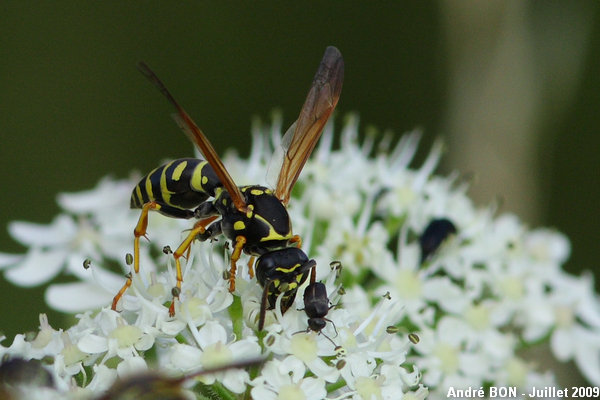
|
You can tell this female Polistes bischoffi apart with its black cheeks, the black stripe across the yellow clypeus and the blackish antennae. |
| [To know more about the Polistes bischoffi] [Next picture] [Previous picture] [Top] |
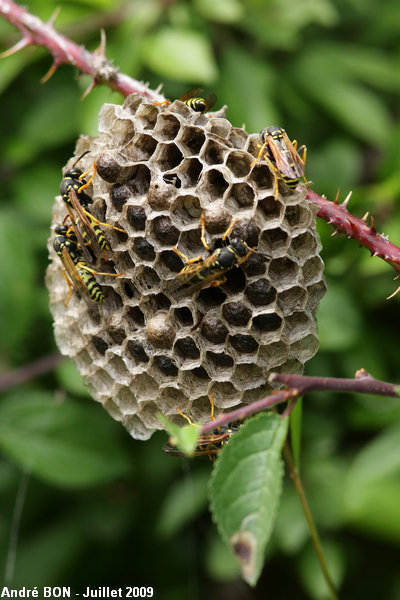
|
I have observed this Paper Wasp nest in a bush located in the middle of an unimproved meadow. Polistes bischoffi's nests are always located outside buildings. |
| [To know more about the Polistes bischoffi] [Next picture] [Previous picture] [Top] |
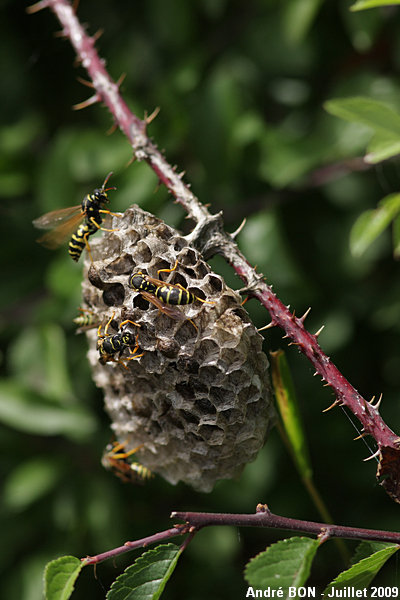
|
Polistes bischoffi's nests are often positioned so that the cell openings are on the lateral side. This eases observation. |
| [To know more about the Polistes bischoffi] [Next picture] [Previous picture] [Top] |
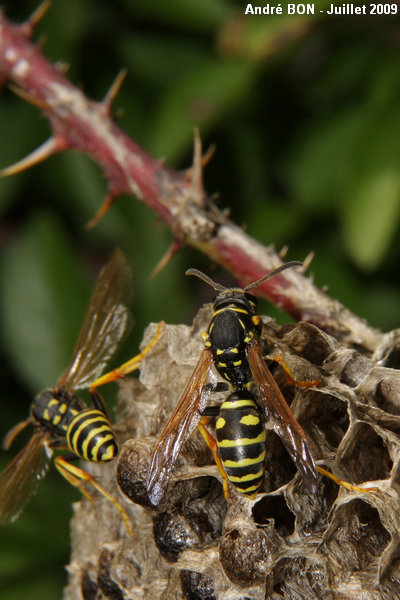
|
You can notice here the abdomen which is tapered on both ends. This is typical of Paper Wasps. |
| [To know more about the Polistes bischoffi] [Next picture] [Previous picture] [Top] |
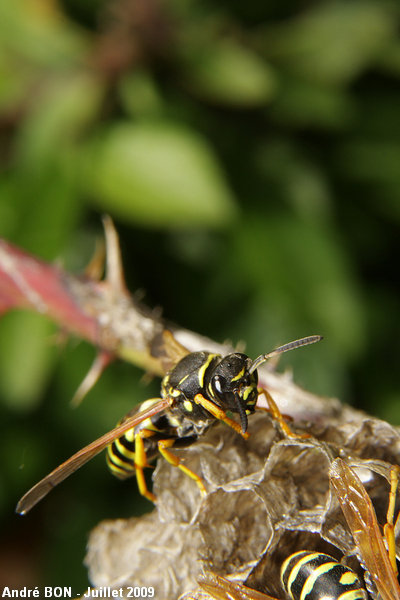
|
This front view of a female worker enables identification of Polistes bischoffi. The upper side of the antennae is blackish. The cheeks are black and the yellow clypeus is crossed by a black stripe. |
| [To know more about the Polistes bischoffi] [Previous picture] [Top] |
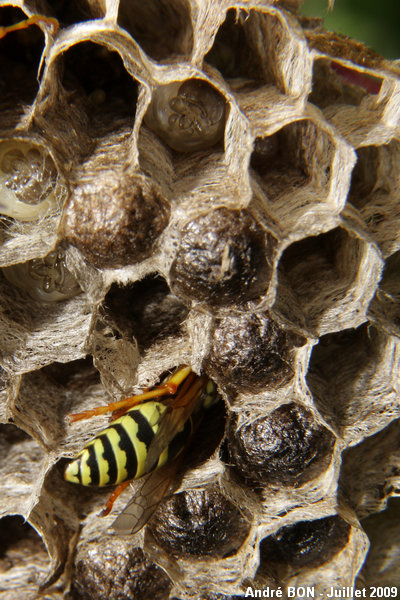
|
In Paper Wasp nests, cells are not closed and enable observation of the larvae. I have read that Polistes bischoffi can sometimes become aggressive if you get close to the nest without care. I have not seen such a behaviour, but be careful … |